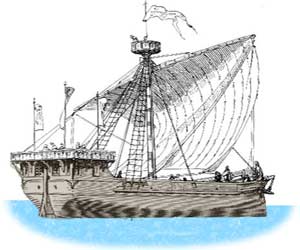The following abbreviated version of the clauses 1 to 7 of the Constitutions of Clarendon exists only in one 12th century collection of manuscripts, amongst a set of Becket's correspondence in the Bodleian library Oxford - Bodl. MS Rawlinson Q.f.8 (27836). This collection was in the Library of Ely Cathedral in the 14th century. It might be an abridged version of the full text , or an abstract compiled by the clerics who formed this collection. It is conceivable that it might even be a preliminary version of the Constitutions, made quite late on when they were being formulated.
Abstracted from
Dorothy Whitelock; Martin Brett; Christopher Nugent Lawrence Brooke (1981). Councils & Synods: With Other Documents Relating to the English Church. A.D.871-1204. Clarendon Press. pp. 883-5. ISBN 978-0-19-822394-8.
1. De presentationibus ecclesiarum placitum inter laicos sive inter clericos, sive inter clericos et laicos, in curia regis terminetur.
Concerning the presentation [advowson] of churches in legal proceedings between either lay persons, or between clerics, or between clerics and lay persons are to be decided in the king's court.
2. Elemosine (sic for Ecclesie) de feudo regis non possunt dari in elemosinam in perpetuum, nisi per licentiam regis.
Frankalmoign [lands held in free alms] (as thus by the Church) of the king's fee are not possible to be granted in Elemosina [free alms] in perpetuity, not without authorization from the king.
3. Clerici qui calumpniati fuerint et rettati de quacumque re, summoniti per iusticiam regis veniant in curiam regis responsuri ibia de hoc quod ipsi curie videbitur ibi respondendum, et inde ad curiam sancte ecclesie ibi ad respondendum vel faciendum quod iustum fuerit; et iusticia regis mittat in curiam ecclesie ad videndum quo iure res tractetur.
Clerics who have committed any calumny and who have been accused on any matter whatsoever, are to be summoned by the king's justice to come into the king's court to be seen in that court to answer, there to respond about this, and then [to be sent] to the court of the holy church there to respond and/or to do that which must be done, that which is right and just; and the king's justice is to be sent into the ecclesiastical court to see that justice is done.
4. Episcopis sive aliis personis non licet exire a regno Anglie nisi per licentiam regis.
Bishops or other parsons [vicars or ecclesiastical persons] are not allowed to leave the kingdom of England without the king's authorization.
3b. Clericum convictum et confessum non debet ecclesia tueri.
Clerics who have been convicted and have confessed must not be protected by the Church.
5. Excommunicati non debent dare pro absolutione sua pignus, nisi vadium et plegium standi iudicio ecclesie, nec prestare iuramentum.
Excommunicates must not give their own pledge for absolution, without bail and surety to stand trial in the church [court], nor proving an oath.
6. Laici non accusentur nisi per legitimes accusatores et legales testes et in presentia ipsius episcopi causa tractetur, salvo tamen iure archidiaconi.
Lay persons are not to be charged except by legitimate accusers and in the presence of lawful witnesses, and the case dealt with in the presence of the bishop himself, having regard, however, for the right of the archdeacons.
7. Barones regis vel servientes vel aliqui qui in capite de rege teneant non excommunicentur, donec domino regi prius ostendatur, et in curia regis quod ad iusticiam regis pertinet et in curia ecclesiastica sit quod ibi pertinet.
The king's barons and/or in his service, and/or anyone who is a tenant-in-chief [tenens in capite] of the king are not to be excommunicated, until it has been first disclosed to the lord king, and the case brought both before the king's court for that which pertains to the king's justice, and into the ecclesiastical court for matters which pertain there.
References
Two Early Collections of the Becket Correspondence and of other Contemporary Documents
A. Saltman
Bulletin of Historical Research
See 11b Variant text of the first seven Constitutions of Clarendon (unprinted).
Bodleian Library Catalogue Entry
Shelfmark MS. Rawl. Q. f. 8
Summary Catalogue no. 27836
Summary of contents Letters of and documents concerning Thomas Becket. From the library of Ely cathedral priory.
Language Latin
Origin English
Date 12th century, fourth quarter
Material parchment

%2C_f._4v_-_BL_Loan_MS_88.jpg)










